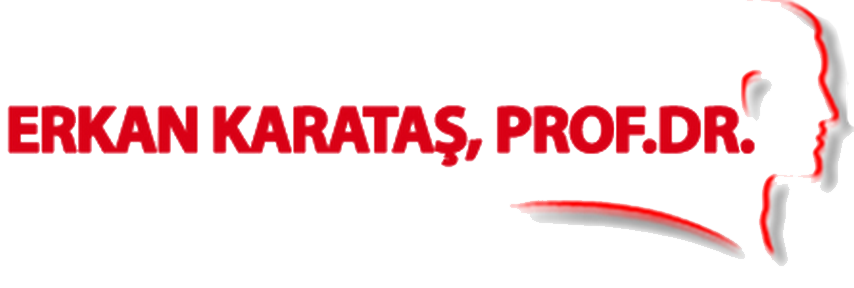Septoplasti ve Konka Cerrahi (Burun eti cerrahisi)

Burunda Septum, burunu iki bölüme ayıran, kıkırdak ve kemikten yapılmış ve normalde orta hatta duran bir duvardır. Kıkırdak ve kimk septum, mukoza denilen ince bir zar ile örtülüdür.. Bu katman, burun içinin cilt tabakası gibi davranır. Bu tabaka kıkırdak ve kemiği kaplar ve korur. Ayrıca burun iç kısmının nemli kalmasına yardımcı olur.


Septum eğriliğinde, burun bir veya her iki taraflı tıkanabilir. Bu durumlarda cerrahi eğiriliği düzeltmeye ve hava akışını yeniden sağlamaya yardımcı olabilir.
Eğri septumu düzeltmek için yapılan cerrahiye septoplasti denir. Septoplasti en sıklıkla burun tıkanıklığını gidermek için uygulanır. Bazen, septoplasti, sinüs cerrahisi veya nazal tümör çıkarma gibi diğer cerrahi işlemlerin gerekli bir parçasıdır.
Septoplasti operasyonunda eğri kıkırdak ve kemik yapı düzeltilmeye çalışılır. İşlem sırasında mukoza (zar) önce kıkırdaktan ve kemikten ayrılır. Daha sonra eğri kıkırdak ve kemik çıkarılır veya düzeltilir veya tekrar şekillendirilebilir ve yerine konulur. Daha sonra mukoza (zar) yerine yatırılır.
Septum kıkırdağın ‘hafızası’ olduğu için – başlangıç şeklini almak eğilimi vardır – septal kıkırdak bazen ameliyattan sonra kıvrılabilir.
Septoplasti, anestezi altında yapılan bir cerrahi işlemdir. Cerrahi genellikle genel anestezi altında yapılır, ancak gerekli hallerde lokal anestezi altında da yapılabilir. Cerrahi işlemler günübirlik yapılabilir, aynı gün hasta taburcu edilebilir.
Cerrahi sonrası genelde burun içine silikonlu delikli burun tamponları yerleştirilir. Burun içine sadece eriyebilir dikişlerde atılabilir ve tamponsuz işlem bitirebilir. Bazı durumlarda burun içine diğer tip tamponlarda konulmak zorunda kalınabilir ve tamponların ne kadar kalacağını doktorunuz size söyler.
Konka Cerrahisi (Burun eti cerrahisi)
Konkalar (Burun etleri) burun içinde dış duvarda bulunan yapılardır. Borun yan duvarlarında boylu boyunca üst üste üç yapı olarak yer alırlar. Burun etleri konka olarak adlandırılır ve yumuşak ve kemik dokudan oluşurlar. Konkalarda, yumuşak doku veya kemik dokular veya her ikisi birden büyüyebilir. Burun eti (konka) şişlikleri bir çok hastada yumuşak doku büyümeleri (hipertrofisi) şeklinde olur. Burun eti büyümelerine konka hipertorifleri adı verilir ve sıklıkla burun tıkanıklıkları yaparlar.
Hipertrofik konkaları küçültmenin birçok yolu vardır. Cerrahi işlem, genellikle konka redüksiyonu veya konka rezeksiyon olarak adlandırılır. Cerrahi işlem muayehane şartlarında veya ameliyathanede yapılabilir. Pek çok durumda, konka ameliyatı ve septoplasti ile aynı seansda yapılır.
Konkaların cerrahi ile tümü ile çıkarılmaması gereklidir, bu durum konkaların işlevini bozar.
Konkaların cerrahi ile yok edilmesi, burunda sürekli kuruluk ve kabuklanma yapar. Konkalar burunun kliması olup, burun içinin ısıtılıp nemlendirilmesini sağlar. Cerrahi işlemler sonrasında da konkalarda tekrar büyüme olabilir ve cerrahi işlemler tekrarlanabilir. Tekrar cerrahi yapılması, konkaların tümü ile yok edilmesinden ve kalıcı burun sorunları oluşturmasından çok daha daha iyi ve kolaydır.
Burun eti küçültme operasyonları ile ilgili bir çok cerrahi teknik duyabilirsiniz. Bu teknikler koterizasyon, koblasyon, radyofrekans küçültme, mikrodebrider rezeksiyon ve kısmi rezeksiyon olarak sıralnabilir. Bu tekniklerin hepsinde konka ana iskeleti ve mukozası korunmakta ve ısı etkisi ile skar dokusu oluşturmakta ve kütle olarak küçültme işlemi yapılabilmektedir.
Diğer bazı cerrahi tekniklerde, konka kütlesinin bir kısmı çıkarılabilir. Önemli olan, burun içinin ısısını ve nemini ayarlayabilecek miktarda kütlenin kalmasıdır. Submukozal rezeksiyon, hipertorfik konka tedavisinde kullanılan yaygın bir tekniktir. Bu işlemle, konkanın mukozası (zarı) korunur, konkanın içinden parça çıkarılır. Bazen, bu rezeksiyon mikrodebrider adı verilen bir cihazla yapılabilir. Mikrodebrider cihazı, konka dokusunu kanatmadan keserek vakum etkisi ile alarak çıkartır. Bazende konka dokusunun daha çok çıkarılması gerekebilir.
FONKSİYONEL SEPTORİNOPLASTİ


Giriş
Rinoplasti (Burun estetiği) terimi, genelde burun dış iskeletinde değişiklikler yapmak için uygulanan cerrahi prosedürlerdir, ancak bir Kulak Burun Boğaz (KBB) Uzmanı için burun dış iskeleti kadar, iç yapılarınıda düzelten cerrahi işlemlerdir. Burun yüzde önemli bir estetik organ olması yanında, KBB uzmanı için havanın ısıtılıp nemlendirilmesini ve rahat nefes almayı sağlayan da bir organdır. Burun dış iskelet yapısında düzeltmeler ile birlikte, burun iç yapılarının da düzeltilerek rahat nefes almayı sağlamak KBB uzmanı için çok önemlidir. Burun dış ve iş yapılarının düzeltilerek, daha işlevsel bir buruna kavuşturma operasyonlarına FONKSİYONEL SEPTORİNOPLASTİ operasyonları denilmektedir. Bu durumda, ameliyat daha özel olarak işlevsel bir rinoplasti olarak anılır. Burun boşluklarının dış ve iç duvarlarının onarılmasını içeren FONKSİYONEL SEPTORİNOPLASTİ operasyonu, sadece dış iskelet cerrahisini içeren RİNOPLASTİ OPERASYONUNDAN tamamen farklıdır. Fonksiyonel bir rinoplasti, olarak burun valvlerini onarılmasını içerir; burun valvleri, içinde iç kıkırdaklar ile septum arasında, üst hava yolunun en dar yeridir. Bu bölge, doğuştan dar olabilir), yaşla birlikte çökebilir veya önceki ameliyatlardan yaralanabilir. Nazal valvlerdeki operasyon genellikle solunumu geri kazandırmak için yapılırken, burun görünümünde tipik olarak bir takım değişiklikler yapılması da gerekir
Endikasyonları:
Fonksiyonel bir rinoplasti için endikasyonlar aşağıdakiler ile sınırlı olmamak ile birlikte
• Burundan rahat nefes alamama (fonksiyonel)
• Burun travması sonrası şekil bozukluğu ve nefes almada sorun
• Doğumsal burun yaralanmaları sonucu gelişen deformiteler
• Travma, tümör veya enfeksiyon nedeniyle sonradan oluşmuş deformiteler
• Nazal valv kollapsı ve darlığı
Cerrahi teknik
Fonksiyonel septorinoplasti operasyonu, lokal anestezi, damaryolundan sedasyon anestezisi veya genel anestezi ile hekim veya hastanın tercihine göre uygulanabilir. Burun dış iskeleti ve iç anatomik yapılara ulaşmak için kesiler yaplır. Bu kesiler burun içerisinden görünmeyecek şekilde ve sadece burun ucundan da küçük bir kesi ile bütünleştirilir. Bazen burun dış ucunda, ciltteki bu küçük kesiye de ihtiyaç kalmaz. Cilt kesiside ilerde belli olmayacak şekilde hızla kapanır.
Burun dış iskeletine destek olmak için çoğu kez septoplasti aşamasında çıkarılan kıkırdakdan parçalar kullanılır. Daha önceden burun operasyonu ya
pılmış kişilerde bu kıkırdak destek bulunamaz ise, kulak arkasdından veya kaburgadan kıkırdak destek alınabilir. Burun dış iskeletinde şekil vermek içinde, çeşitli özel ve içeride kalabilen veya eriyebilen dikişler kullanılır. Burun dış iskeletindeki eğrilikleri düzeltmek için, Osteotomi denilen işlemler ile burun kemikleri hassas bir şekilde kırılır. Burun dış deliklerindeki anormal görüntülerde z plasti gibi yöntemler ve sütürler ve cerrahi rezeksiyon ile düzeltilir.
Operasyon sonunda, burun dış cildi flasterlenir, üstüne termal alçılar konur, burun içine de nefes alıp vermeye de imkan tanıyan silikonlu burun tamponları konulur. Burun içine atılan onlarca eriyebilen veya kalıcı dikişler alınmaz, burun ucu cildi de dikilir ve 4 gün sonra buradaki dikiş alınır.
Riskleri
Estetik burun ameliyatının amacı mükemmel veya idealinizdeki bir burun değil sahip olduğunuzdan daha güzel görünümlü bir burun sağlamaktır. Bu ameliyatı kendiniz için olmalısınız, başkalarının ilgisi ve övgüsü için veya daha güzel bir eş veya iş temini amacıyla olmayınız. Ameliyatınızı yapacak olan hekime tam olarak güvenene kadar ameliyata karar vermeyiniz Bu yazı sizi korkutmak amacıyla değil, konu hakkında bilgilendirerek ameliyat olma kararınızı sağlıklı bir şekilde vermeniz için hazırlanmıştır. Burnunuzun ameliyat sonraki görünümünü bir başkasının burunu ile değil, kendi burnunuzun ameliyat öncesi fotoğraflarıyla mukayese ediniz. Ameliyatınız sadece burnunuzun şeklini değiştirecek, sosyal veya kişisel problemlerinize bir çözüm olmayacaktır. Hedefimiz size ameliyat geçirmiş değil, doğal görünümlü bir burun kazandırmaktır.
Fonksiyonel septorinoplasti olan hastaların çoğunda ciddi sorunlar ya da komplikasyonlar olmadan iyileştiği ve hastaların çoğunun daha iyi nefes alabildiği ve yaşam kalitesinin yükseldiği tespit edilmiştir. Bununla birlikte birtakım komplikasyonlarda ortaya çıkabilir.
• Anestezi komplikasyonları
• Burun kanaması
• Septal perforasyon (burun iç duvarındaki delik)
• Yetersiz görünüm
• Revizyon ameliyatı ihtiyacı
• Enfeksiyonlar
• Burun solunumunda kötüleşme
Faydaları
Fonksiyonel septorioplasti operasyonlarının birincil amacı, daha rahat burundan nefes alıp verebilme ve bunun yanında anormal görüntüleri minimale indirmedir. Görünüm ile birlikte, fonsiyonel kazanç sağlanmasıda çok önemlidir.
Özet
Fonksiyonel septorinoplasti operasyonu, burun dışiskeletinde düzeltmeler sağlayan cerrahi bir işlemdir ve cerrah, hastanın hedeflerine, anatomik problemlerine ve cerrahın tercihlerine göre çok çeşitli teknikler kullanabilir. Cerrahi, hasta sedasyon veya anestezi altında ve primer veya revizyon cerrahisi olarak yapılabilir. Kıkırdak greftler gerekebilir ve iyileşme süresi hastadan hastaya değişiklik gösterebilir. Hastalar, doktorları ile operasyonun muhasebesini iyi yapmalılar ve fonksiyonel-estetik kazançalarını görmeleri gerekmektedir. Burun dış iskeletinde ufak değişiklikler ve çok rahat nefes alma imkanı, hasta için en ideal kazanımdır.
.
Septoplasty and Turbinate Surgery

The septum is made of cartilage and bone. The cartilage and bone of the septum are lined by a thin membrane called mucosa. This layer acts like a layer of skin for the inside of the nose. This layer covers and protects the cartilage and bone. It also helps to keep the inside of the nose moist.


When the septum is deviated, one or both sides of the nose can become blocked. In these instances, surgery can help correct the deviation and improve airflow.
Surgery to correct a deviated septum is called a septoplasty. Septoplasty is most commonly performed to help relieve nasal obstruction. Sometimes, septoplasty is a necessary part of other surgical procedures like sinus surgery or nasal tumor removal.
During a septoplasty, your surgeon will attempt to straighten the cartilage and bone that have led to the septum being deviated. During the procedure, the lining (the mucosa) is first lifted off the cartilage and bone. The cartilage and bone can then be reshaped. Sometimes, portions of the cartilage and bone need to be removed. The lining is then laid back down.
Because the septal cartilage has ‘memory’–it has a tendency to assume its initial shape– the septal cartilage can sometimes bend after the surgery.
Septoplasty is a procedure that is done in the operating room under anesthesia. The procedure is typically performed under general anesthesia, but your doctor can help you decide if local anesthesia is an option for you. The procedure is typically performed on an outpatient basis. This means that patients come in and go home the same day.
You may have splints or packing inside your nose during the healing process. In some instances, there may be nothing more than dissolving stitches inside your nose. Your surgeon can let you know whether packing or splints will be placed in your nose and how long they will stay in place.
Turbinate Surgery
The turbinates are structures on the side wall of the inside of the nose. They project into the nasal passages as ridges of tissue. The turbinates are made of bone and soft tissue. Either the bone or the soft tissue can become enlarged. In most patients, enlargement of the soft tissue part of the turbinate is the major problem when the turbinates become swollen. When the turbinates are large, they are called hypertrophic turbinates and they lead to nasal obstruction.
There are many ways to shrink the size of the turbinates. Surgery is typically called turbinate reduction or turbinate resection. Surgery can be performed either in the office or in the operating room. In many instances, turbinate surgery and septoplasty are performed at the same time.
It is important that the turbinate not be removed completely because that can affect the function of the turbinates. Complete turbinate removal can result in a very dry and crusty nose. Occasionally, turbinate tissue will re-grow after turbinate surgery and the procedure may need to be repeated. This is preferable to the situation of totally removing the turbinate.
You may hear of many different terms being used when it comes to surgery for the turbinates. Examples of these terms are cauterization, coblation, radiofrequency reduction, microdebrider resection, and partial resection. These all refer to different methods of reducing the size of the turbinates.
Some of these methods shrink the turbinates without removing the turbinate bone or tissue. These methods include cauterization, coblation, and radiofrequency reduction. In each of these methods, a portion of the turbinate is heated up with a special device. Over time, scar tissue forms in the heated portion of turbinate, causing the turbinate to shrink in size.
With some of the other procedures, a portion of the turbinate is removed. It is important that enough of the turbinate be left intact so that the turbinate can warm and humidify the air that is flowing through the nose. A procedure called submucosal resection is a common technique used to treat enlarged turbinates. With this procedure, the lining of the
turbinate is left intact, but the “stuffing” from the inside of the turbinate is removed. As the turbinate heals, it will be much smaller than before surgery. Sometimes, this resection can be performed with a device called a microdebrider. This device allows the surgeon to remove the “stuffing” through a small opening in the turbinate. In some instances, more of the turbinate is removed.
Functional Septorhinoplasty


Introduction
The term rhinoplasty in general refers to plastic surgery performed to make changes to the external structures of the nose, but it includes also internal and external structures for an Otorhinolaryngolist also. While this may be performed for purely cosmetic reasons to improve appearance, but primary or simultaneous goal for and ENT Doctor is to restore the ability to breathe through the nose. In this case, the surgery is more specifically referred to as a functional rhinoplasty. This is different from a septoplasty, which involves only repair of the internal wall that divides the nasal cavities, or from a cosmetic rhinoplasty, which is done to improve appearance. A functional rhinoplasty typically involves repair of the nasal valves, which is the medical term for the internal cartilage valves within the nostrils. These can be congenitally narrow(meaning you are born that way), collapse with age, or can be scarred from prior surgery. While surgery on the nasal valves is usually performed to restore breathing, it typically necessitates some type of change to the appearance of the nose.
Indications
The indications for a functional septorhinoplasty include, but are not limited to:
- Obstructed nasal breathing (functional)
- Nasal injury (trauma) causing unsatisfactory breathing
- Nasal birth defect impairing function
- Acquired deformity due to trauma, tumor or infection
- Narrowing, collapse or stenosis of the nasal valves (nostrils)
Procedure
A functional rhinoplasty may be performed under different types of anesthesia depending on patient and physician preference, including local anesthesia (i.e. patient awake but with “numbing medications”), intravenous sedation (i.e. “twilight”) or general anesthesia (i.e. completely asleep). Incisions are made to allow access to the underlying cartilage and bone. These incisions may be hidden completely inside the nostrils, or involve internal incisions combined with a tiny incision through the skin at the base of the nose.
Often cartilage and/or bone may need to be obtained from another site to help gain support. These cartilage grafts are often taken from the nasal septum during the septoplasty portion of the procedure, although sometimes ear or even rib cartilage may need to be harvested. Further reshaping or grafting may need to be performed with sutures to the cartilage, or sutures to reshape or suspend the cartilage. Osteotomies – or deliberate fracturing of the nasal bones – may be performed to straighten the nasal bones if they are crooked or deformed. Although cartilage grafting remains the most common type of functional rhinoplasty, procedures to reshape the nostrils (ex: a “z-plasty”) or the use of sutures and screws to suspend the nasal tissues have grown in popularity.
At the conclusion of the procedure, the outside of the nose is often taped and some form of external cast may be applied. Plastic sheets and/or packing may also be temporarily placed inside the nose depending on the procedure and the surgeon’s preference.
Risks
The aim of functional septorhinoplasty is to provide a more beautiful looking nose than you have, not a perfect nose or ideal nose. You should be doing this surgery for yourself, not for the interest and praise of others, or for a better partner or business. Do not decide whether the surgery will do the surgery as much as you trust it. This surgery is designed not to scare you, but to inform you about the issue and give you a healthy sense of your surgery. Compare the postoperative view of your nose with the preoperative images of your own nose, not someone else’s nose. Your surgery will only change the shape of your nose and will not be a solution to your social or personal problems. Our goal is not to have you undergo surgery, but to gain a natural looking nose.
Studies have shown that most functional rhinoplasties heal without serious problems or complications and the majority of patients are able to breathe better and enjoy an improved quality of life. However, there are potential complications that every surgical candidate should be aware of before proceeding with the procedure which include (but are not limited to):
- Complications of anesthesia
- Epistaxis (nosebleed)
- Septal perforation (hole in internal wall of the nose)
- Unsatisfactory appearance
- Need for revision surgery
- Infections
- Worsening (rather than improvement) in the nasal breathing.
Benefits
An improvement in nasal airflow is the primary benefit of a rhinoplasty performed for functional reasons. The procedure may also straighten the nose, repair post-traumatic or congenital deformities, and improve the appearance.
Summary
A functional rhinoplasty is a procedure to improve the function of the external nose, and the surgeon may use a great range of techniques depending on the patient’s goals, the anatomic problems, and the surgeon’s preferences. The procedure may be done with the patient awake or under anesthesia and as a primary or revision surgery. It may involve cartilage grafting, and the recovery time may vary depending on the severity of the problem. Patients should be prepared to discuss their specific goals with their surgeon. After their consultation they should understand the procedure itself, as well as its risks and its benefits. They should understand that even if they undergo this type of surgery with the goal of improved nasal breathing, this may involve a modest alteration in the appearance of their nose.
.


